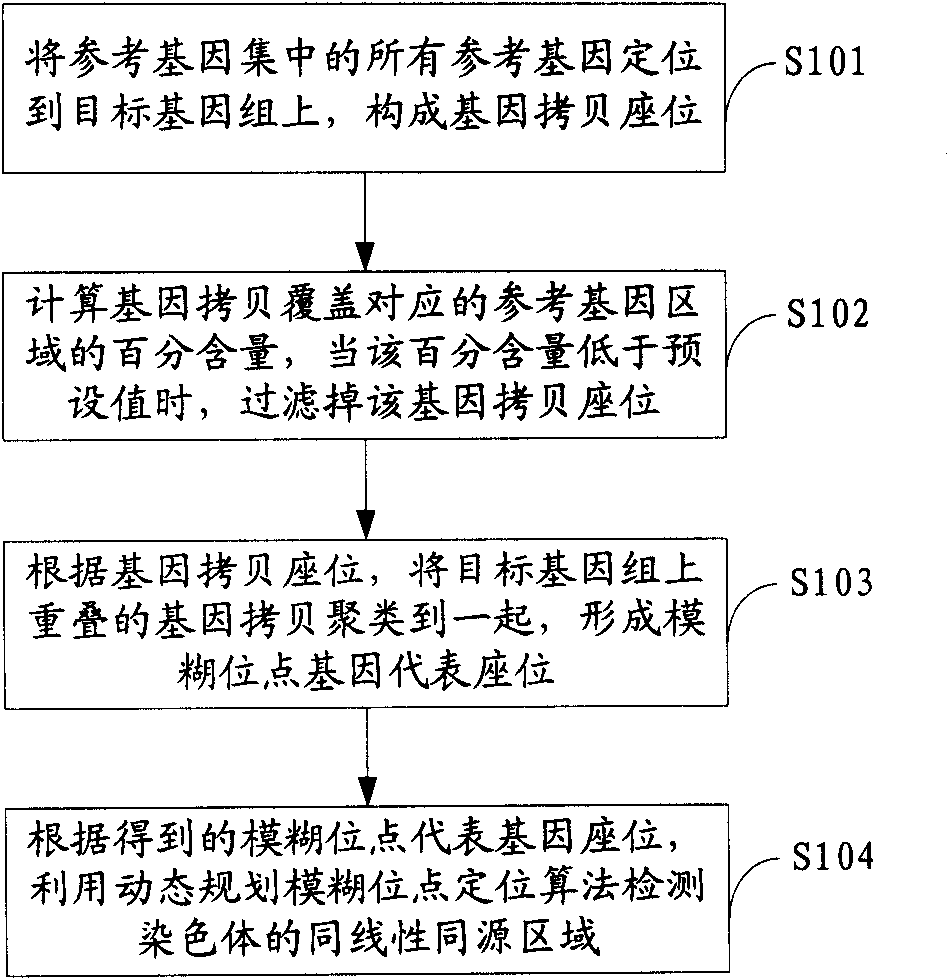Detection method of chromosome synteny homology region and system thereof
A homologous region and homologous technology, applied in the field of genetic engineering, can solve the problems of low detection efficiency and high complexity, and achieve the effects of low complexity, avoiding influence and high sensitivity
- Summary
- Abstract
- Description
- Claims
- Application Information
AI Technical Summary
Problems solved by technology
Method used
Image
Examples
Embodiment Construction
[0025] In order to make the object, technical solution and advantages of the present invention clearer, the present invention will be further described in detail below in conjunction with the accompanying drawings and embodiments. It should be understood that the specific embodiments described here are only used to explain the present invention, not to limit the present invention.
[0026] In the embodiment of the present invention, the reference genes in the reference gene set are located on the target genome to obtain gene copy loci, and then the overlapping gene copies on the target genome are clustered together to form fuzzy loci representing gene loci, and finally according to The obtained fuzzy sites represent gene loci, and the syntenic and homologous regions of chromosomes are automatically detected by using the dynamic programming fuzzy site positioning algorithm.
[0027] figure 1 It shows the implementation process of the detection method for chromosome synteny an...
PUM
 Login to View More
Login to View More Abstract
Description
Claims
Application Information
 Login to View More
Login to View More - R&D Engineer
- R&D Manager
- IP Professional
- Industry Leading Data Capabilities
- Powerful AI technology
- Patent DNA Extraction
Browse by: Latest US Patents, China's latest patents, Technical Efficacy Thesaurus, Application Domain, Technology Topic, Popular Technical Reports.
© 2024 PatSnap. All rights reserved.Legal|Privacy policy|Modern Slavery Act Transparency Statement|Sitemap|About US| Contact US: help@patsnap.com










